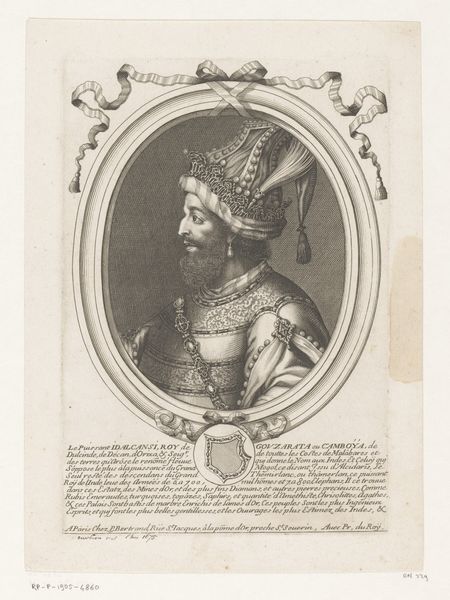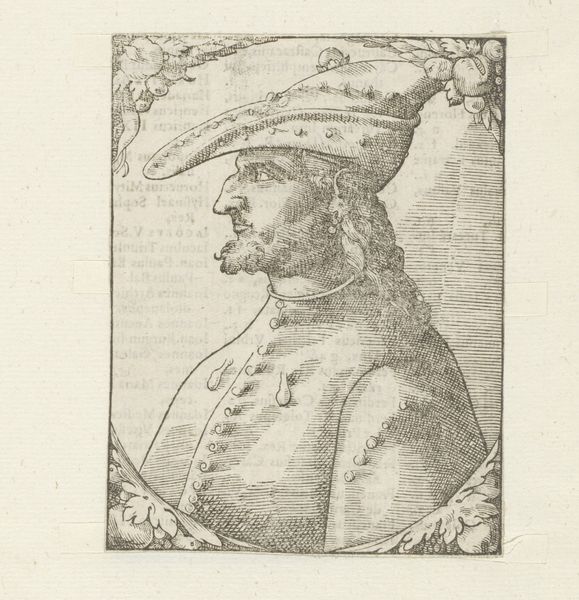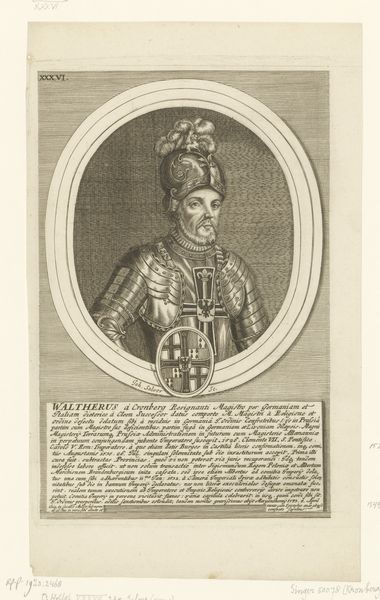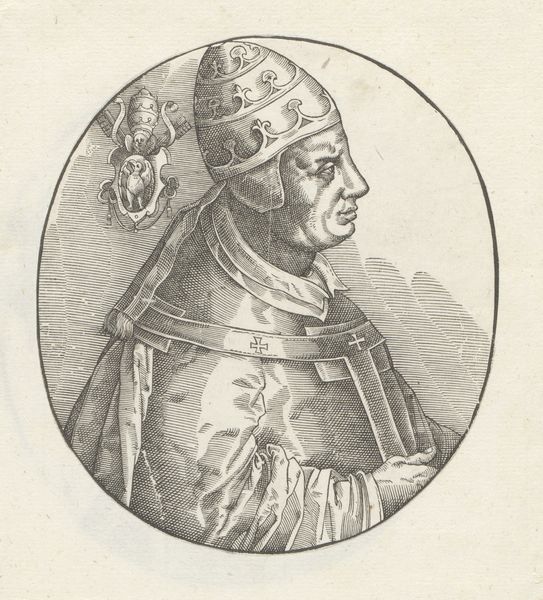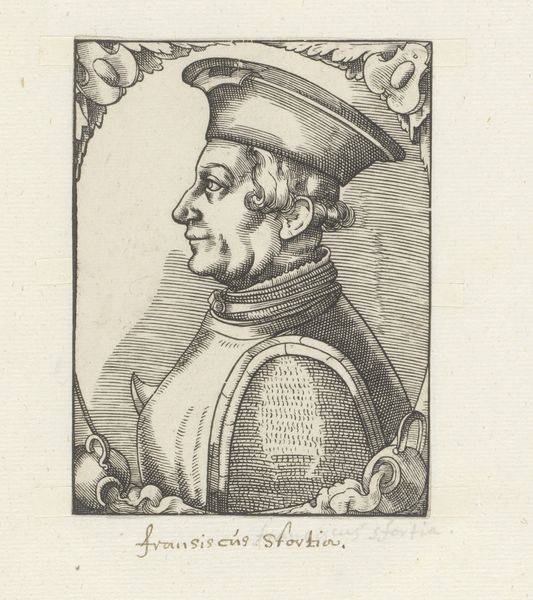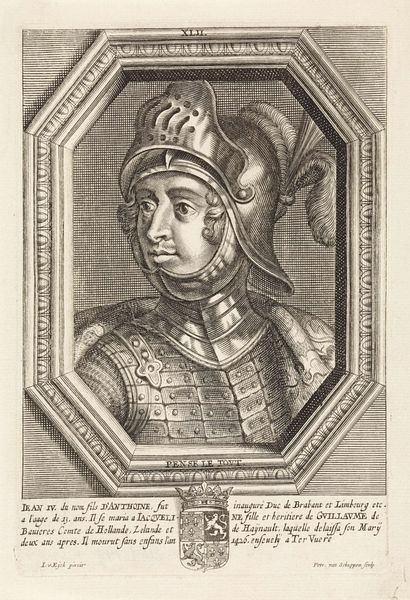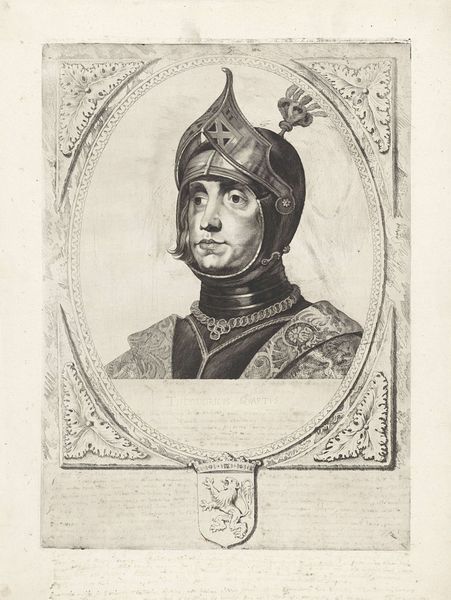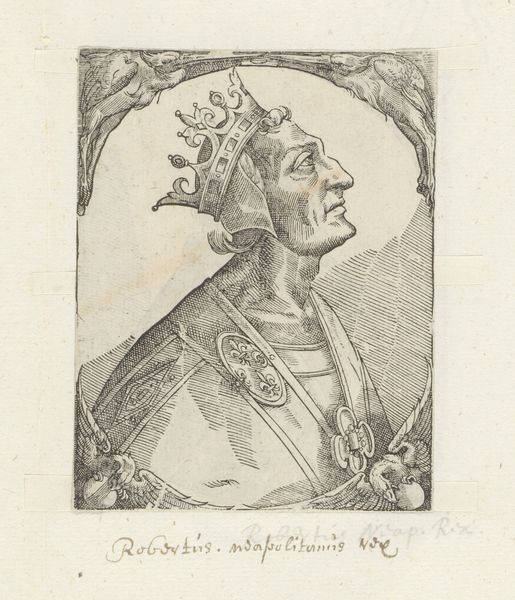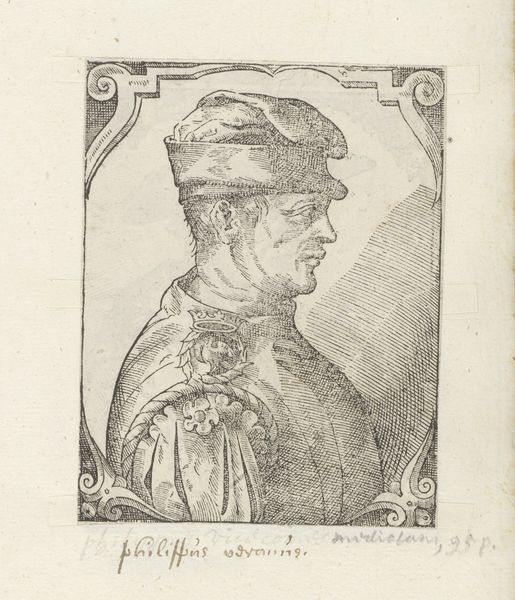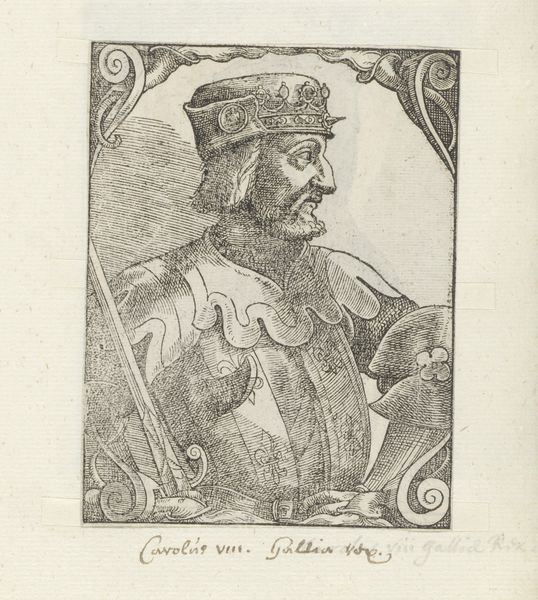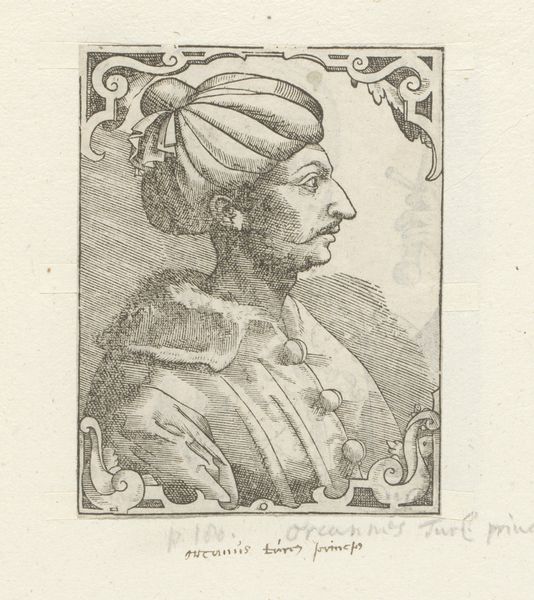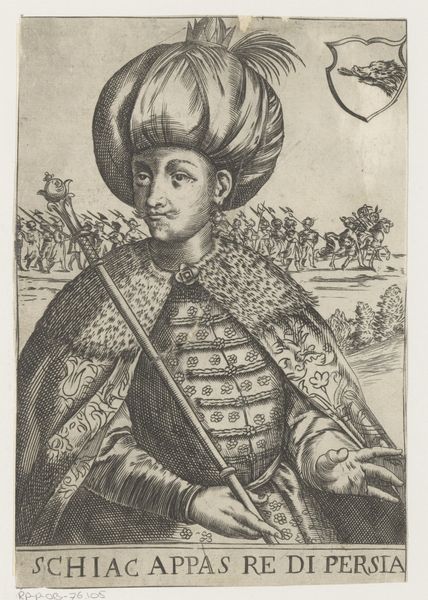
intaglio, engraving
#
portrait
#
medieval
#
intaglio
#
old engraving style
#
italian-renaissance
#
engraving
Dimensions: height 109 mm, width 83 mm
Copyright: Rijks Museum: Open Domain
Curator: This engraving presents a portrait of Muzio Attendola Sforza, dating roughly between 1549 and 1575. It's an intriguing example of the Italian Renaissance aesthetic applied to intaglio. Editor: My immediate impression is severity. The sharp lines of the engraving combined with Sforza's stern profile convey a powerful, almost unyielding presence. The scale is intimate, though. How was an engraving of this kind made? Curator: The engraver uses very precise, controlled cuts into a metal plate. Think of the material effort! This plate is then inked, and the image transferred to paper under great pressure, revealing fine lines and details. This process was demanding. Editor: Precisely! Look closely at the armor. Its design—those linked, almost omega-shaped patterns—feels so carefully wrought. It would take great skill and hours to create a printing plate this way. Are the symbols intentional or ornamental, though? Curator: Both, likely. Armor and costume of the Renaissance spoke volumes. A military figure like Sforza would deliberately utilize symbols of power, lineage, and personal identity. This helps place Sforza among other portraits that are deliberately cultivating memory and influence, and his expression carries a sense of dynastic authority. Note, too, the cherubs within the image's decorative framework. Editor: I keep returning to the line work, however. The parallel hatching defines the forms of the face and costume so efficiently. And the engraver captured such nuances of texture. He had real command of the materials and would have been well known to Sforza himself. Curator: Yes, indeed. Engravings served not only to immortalize, but to broadcast status to a broader audience than a painted portrait could. They were powerful vehicles for solidifying reputation through wider visual circulation. Editor: Thinking of that broadcast—it’s fascinating to consider how a fairly reproducible item could serve the unique image of this man’s importance in 16th century Italy. It adds a very interesting, complicated layer to notions of portraiture at the time, don't you agree? Curator: It is, truly, about the dance of the symbolic, social reach and, of course, enduring influence, so clearly shaped through the artisan’s careful and deliberate method.
Comments
No comments
Be the first to comment and join the conversation on the ultimate creative platform.
